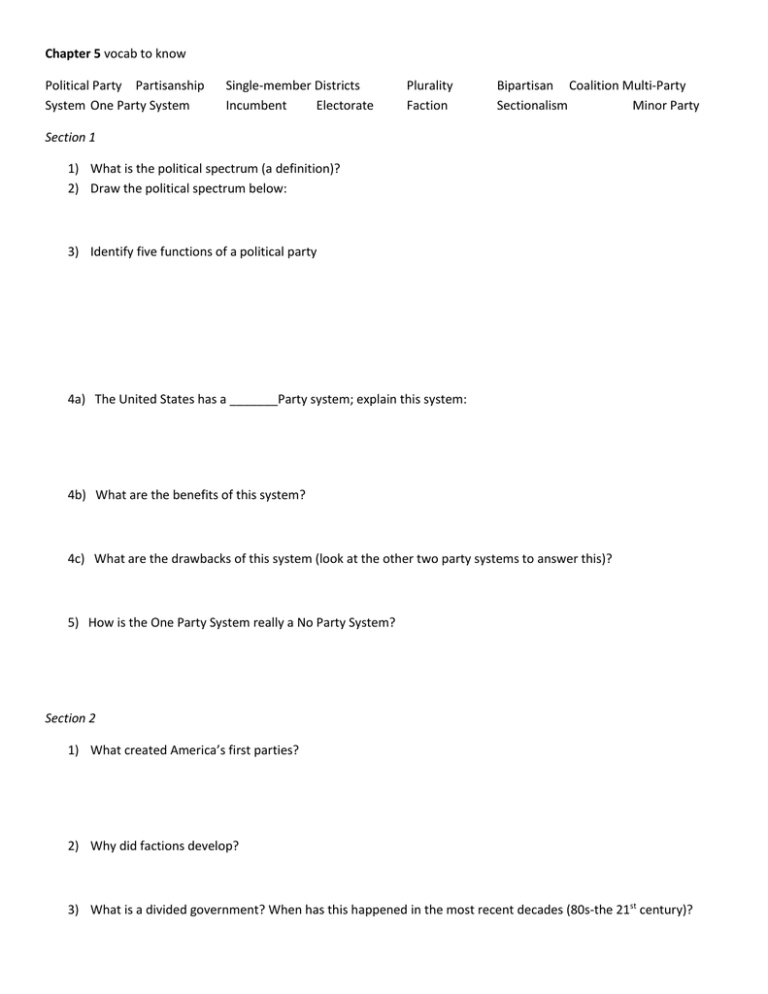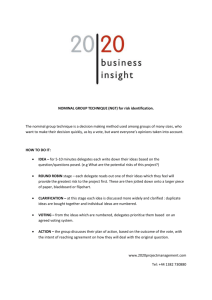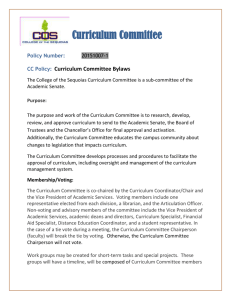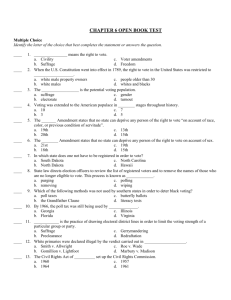Chapter 5 vocab to know Political Party Partisanship Single
advertisement

Chapter 5 vocab to know Political Party Partisanship System One Party System Single-member Districts Incumbent Electorate Plurality Faction Bipartisan Coalition Multi-Party Sectionalism Minor Party Section 1 1) What is the political spectrum (a definition)? 2) Draw the political spectrum below: 3) Identify five functions of a political party 4a) The United States has a _______Party system; explain this system: 4b) What are the benefits of this system? 4c) What are the drawbacks of this system (look at the other two party systems to answer this)? 5) How is the One Party System really a No Party System? Section 2 1) What created America’s first parties? 2) Why did factions develop? 3) What is a divided government? When has this happened in the most recent decades (80s-the 21st century)? Section 3 1) Identify 4 different kinds of minor parties. 2) Identify three reasons minor parties are important to the United States’ political system. Chapter 5 from notes and discussion 1) What is a party platform? 2) Discuss the platforms of the two major parties below Democrats: Republicans: 3) Discuss the platform of one of the Third Parties that ran in the last presidential election: Chapter 6 Vocab to know Suffrage Disenfranchised Voting Rights Act of 1965 Political Socialization Independents Split-Ticket Voting Political Efficacy Ballot Fatigue Off-Year Elections Preclearance Civil Rights Act of 1964 Straight-Ticket Voting Gender Gap Section 1 1) Explain the five stages of expanding the right to vote in the US. 2) The__________have the ability to set voter qualifications. There are 5 restrictions to this right; what are they? Section 2 1a) There are a few “universal requirements” for the right to vote. What does this mean? 1b) What are the universal requirements for voting? 2a) Why do some states require that people register to vote? 2b) What are some controversies surrounding voter registration? 3) How have literacy requirements for voting changed? 4) Who, in the US, is denied the right to vote? Section 3 1) How have literacy tests, poll taxes and gerrymandering been utilized to get around the 15th Amendment? 2) How did the Civil Rights Act of ’64 regulate voting? 3) Name three ways in which the Voting Rights Act of ’65 strengthened the 15th Amendment (don’t forget to read about the amendments to the law). Section 4 1) Name two reasons people don’t vote. 2) What’s the difference between “cannot” voters and “nonvoters”? 3) Identify three major sociological factors that may determine how people vote and discuss, typically, the voting patterns within each factor 4) How does party identification affect how/why people vote? Chapter 6 from notes and discussion 1) Identify three major agents of political socialization. 2) Why is it helpful to politicians to identify patterns in voting behavior?





